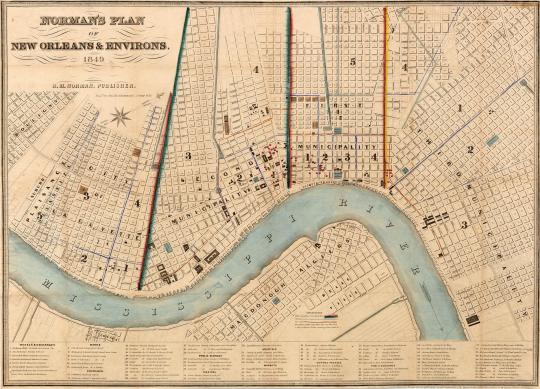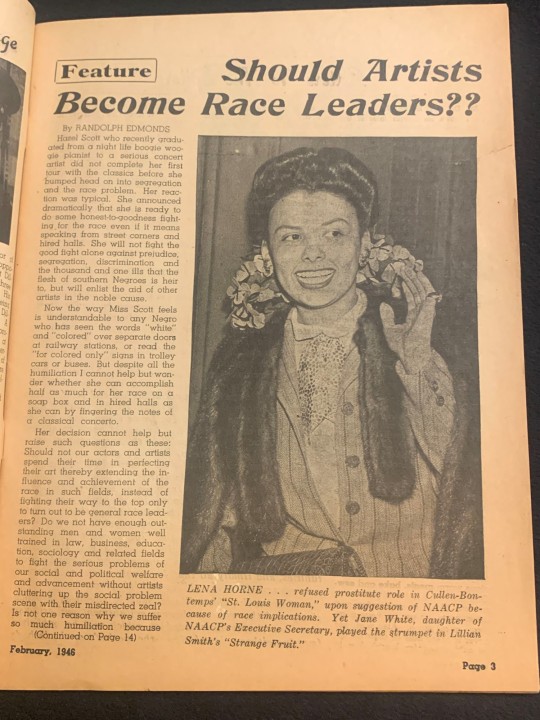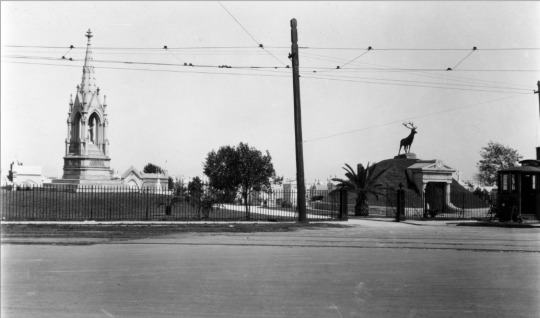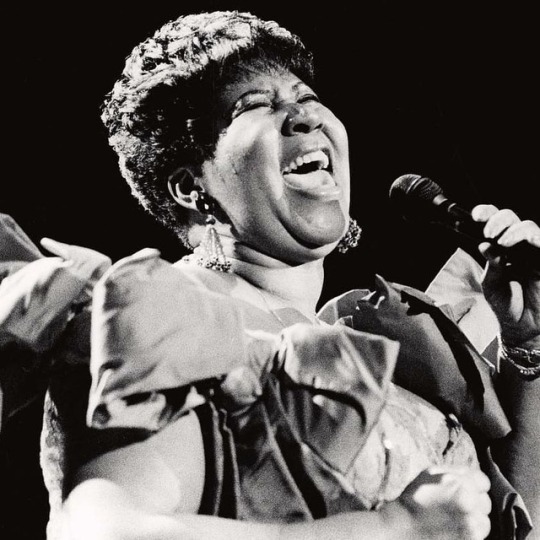#thnoc
Text






MARDI GRAS INVITATIONS
Early and original Mardi Gras invitations , professionally framed and ready to hang.
REX 1884
REX 1891
COMUS 1884
KOP 1904
KOP 1908
KOP 1912
Contac us for more details
504.581.3733 / t
#magazine street#nola#antiques#new orleans#new orleans antiques#collectibles#mardi gras#krewe of rex#rex#comus#kop#proteus#french opera house#thnoc#historic new orleans
4 notes
·
View notes
Text

Mapping the Slave Trade in New Orleans
created in 2015 by The Historic New Orleans Collection for the exhibition Purchased Lives: New Orleans and the Domestic Slave Trade.
Base map: Norman's Plan of New Orleans and Environs
1849; hand-colored engraving
by Shields and Hammond, engravers; Benjamin Moore Norman, publisher
THNOC, gift of Boyd Cruise, 1952.29
7 notes
·
View notes
Text
UrbanV starts vertiport bird testing
New Post has been published on https://petn.ws/THNOC
UrbanV starts vertiport bird testing
Trials of the BCMS (Bird Concentration Monitoring System) are underway at the Test Vertiport UV-0 in Fiumicino, Rome Vertiport UV-0 in Fiumicino The BCMS, designed to combat bird strikes at airports, was installed at UV-0 following the signing of a Memorandum of Understanding between UrbanV and The Edge Company, an Italian deep tech company […]
See full article at https://petn.ws/THNOC
#BirdNews
0 notes
Text
Angela Berry - Watercolor of holly sprigs with berries, inscribed to John Geiser III from the artist. via THNOC. Have a happy and blessed Yule!
0 notes
Text
Maintenance Supervisor
The Historic New Orleans Collection (THNOC) is a museum, research center, and publisher dedicated to the study and preservation of the history and culture of New Orleans and the Gulf South region.We are currently accepting resumes for a Maintenance Supervisor in our Facilities and Maintenance department.
The Maintenance Supervisor is responsible for overseeing the maintenance staff during the…
View On WordPress
0 notes
Text

Mapping the Slave Trade in New Orleans
created in 2015 by The Historic New Orleans Collection for the exhibition Purchased Lives: New Orleans and the Domestic Slave Trade.
Base map: Norman's Plan of New Orleans and Environs
1849; hand-colored engraving
by Shields and Hammond, engravers; Benjamin Moore Norman, publisher
THNOC, gift of Boyd Cruise, 1952.29
0 notes
Video
A Plantation Burial 1860; oil on canvas By John Antrobus, painter (1837-1907) In “A Plantation Burial”, John Antrobus attempts to capture the interior world of African Americans in Louisiana on the eve of the Civil War. The slave preacher and mourners take center stage, while the plantation master and mistress (at far right) and artist Antrobus (at far left; not in view) are relegated to the wings. Through differences in dress, Antrobus articulates a sense of cultural and social diversity among the mourners. Many wear white, frequently associated with Caribbean culture, while others appear in attire signifying their labor roles on the plantation. REF: The Historic New Orleans Collection The Historic New Orleans Collection (THNOC) is a museum, research center, and publisher dedicated to preserving the history and culture of New Orleans and the Gulf South. Photo Credits: @designsbyalicelowe #admLouisianaArtCrawl #admSupportsTheArts #ArtandDesignMatters #VisitNewOrleans #VisitLouisiana #CultureTrip #CultureTravel #CultureTraveler #ArtCollector #ArtHistory #ArtHistorian #ArtCurator #MuseumCurator #admMuseumSupport #THNOC #TheHistoricNewOrleansCollection #art #artanddesign #antiques #antique #HistoryOfArt #PlantationHistory (at The Historic New Orleans Collection) https://www.instagram.com/p/BrwT2vMgVMf/?utm_source=ig_tumblr_share&igshid=1kzi0dl4uf9ya
#admlouisianaartcrawl#admsupportsthearts#artanddesignmatters#visitneworleans#visitlouisiana#culturetrip#culturetravel#culturetraveler#artcollector#arthistory#arthistorian#artcurator#museumcurator#admmuseumsupport#thnoc#thehistoricneworleanscollection#art#artanddesign#antiques#antique#historyofart#plantationhistory
1 note
·
View note
Text
The 19-year-old who questioned New Orleans’s drainage system | The Historic New Orleans Collection
via HNOC:
“Hunter, who started at the University of New Orleans earlier this year, spent much of her last year in high school reading articles and talking to experts about New Orleans’s water management system, a project sparked by the August 2017 floods. She was encouraged to embark on this journey by filmmaker Kira Akerman, who artfully documented the process in the short film Station 15, which THNOC screened on August 28, 2018, as part of the program “Waterlogged: Artists’ Views of their Flooded City.”
“Drawing on that spirit, Akerman began asking Hunter about her personal experiences with water, experiences revealed early on in Station 15. In her conversation with Chang, Hunter asks why Mid-City, where she lived for years, flooded so much when rains drenched the city last August.
It was not the first time Hunter’s world had been threatened by floodwaters. She was six years old during Hurricane Katrina, and remembers the rising water “taking the steps” that led to her front door, one by one. Her family had to climb to the roofs of the Calliope projects to be rescued by helicopter.
“Although she was very young then, Hunter immediately recognized the similarities between the floods of August 2017 and those of 2005.
“I was looking at social media and saw that Canal Street was up to peoples’ knees,” she says about the 2017 floods, when she was then living in New Orleans East. “It felt like I was reliving what had already happened.””
Hunter speaks with Kalamu Ya Salaam about youth activism. Image courtesy of Chasity Hunter.
The 19-year-old who questioned New Orleans’s drainage system | The Historic New Orleans Collection https://www.hnoc.org/content-the-19-year-old-who-questioned-New-Orleans%27s-drainage-system
Read the post: https://ift.tt/2MktIQX
10 notes
·
View notes
Photo

📸 "Edward Kemble’s illustration “The Bamboula” is a rare visual depiction of the activities in Congo Square, though Kemble never visited New Orleans and made the drawing in the late 19th century. (THNOC, 1974.25.23.54)" ---- From Congo Square to Europe—and back: music of the African diaspora in New Orleans | The Historic New Orleans Collection https://ift.tt/30GPgKR https://ift.tt/2xOyayf Follow #ADPhD on IG: @afrxdiasporaphd
12 notes
·
View notes
Link
While I love a good haunting or lore expedition, sometimes the TRUE facts and stories are even eerier.
0 notes
Photo










WWII NEW ORLEANS BLACK AMERICAN MAGAZINE
A rare and original New Orleans magazine for and by the Black American community. “ The Negro South “ for February 1946, Volume 4. A great source of information with great articles, photograph and advertisement of the time.
Covering Music, sports , politics and socials of New Orleans during WWII. With advertising for iconic Nola joints like the DEW DROP INN , Elbert Ellis HORSE SHOW BAR , HAYES CHICKEN SHACK and more.
For baseball fans a fantastic article on Johnny Wright , the New Orleans legend who broke Baseball’s color line along Jackie Robinson . A former Negro league pitcher who was signed by the Dodgers and was far more than merely Jackie Robinson’s roommate..
For the boxing fans an article on Heavyweight Champion and Black American hero Joe Louis, more a gossip article about his relationship with Marva, his first wife.
A political article about Black American artists of the time and their compromise with their community, Should Artists Become Race Leaders ?? featuring Lena Horne and others.
All in all a fantastic magazine, a slice of the Black American life in a time and place.
Item No. E4982
SOLD
504.581.3733 / t
#black americana#black american#black american history#joe louis#johnny wright#jackie robinson#negro league baseball#dodgers#boxing#lena horne#the negro south#historical#ephemera#collectibles#nola#wwii#new orelans#thnoc#antiques#dew drop inn#horse shoe bar#hayes chicken shack
15 notes
·
View notes
Text
Lý do bảo tồn ở New Orleans bày lon nước rỗng
New Post has been published on https://cdn.halosaigon.com.vn/2020/09/04/ly-do-bao-ton-o-new-orleans-bay-lon-nuoc-rong/
Lý do bảo tồn ở New Orleans bày lon nước rỗng
MỹThường lon soda sẽ bị vứt bỏ hoặc tái chế ngay khi hết. Nhưng bảo tồn Lịch sử New Orleans Collections lại bày một chiếc lon méo mó.
Giữa những chiếc quyền trượng từ thế kỷ 19, cổ vật quý giá trong bảo tồn lại có duy nhất một chiếc lon màu trắng ghi dòng chữ xanh “Nước uống (Không bán)”. Nó trông đơn giản, mang dáng vẻ của một món đồ cổ 100 tuổi, nhưng niên đại thực chỉ hơn chục năm.
Được sinh sản trong nhà máy bia Anheuser-Busch ở Georgia, lon nước này là một phần trong quỹ nước uống từ thiện nhưng nhà máy này gửi tới những nạn nhân của trận bão Katrina 2005. Đó là hiện vật khiêm tốn phản ánh một phần lịch sử của TP New Orleans, nhưng nó không phải là duy nhất
Lon nước uống ủng hộ nạn nhân trong trận bão Katrina 2005 được bày trong bảo tồn Lịch sử New Orleans. Ảnh: Sarah Lasknow
Bên ngoài những bức tường của bảo tồn, người ta có thể tìm thấy những lon nước tương tự trên eBay: một pack màu vàng chứa 6 lon nước uống từ trận lũ năm 1997 ở Kentucky, một pack nước uống khác hết hạn năm 1993, hay một mẫu khác mới hơn từ trận bão Sandy năm 2012. Mỗi khi thảm hoạ xảy ra, tổ chức bia Anheuser-Busch lại phối hợp với Hội Chữ thập Đỏ để gửi nước tới vùng phức tạp.
Ra đời từ năm 1852 nhưng tới năm 1906, tổ chức bia có trụ sở ở St. Louis mở màn truyền thống trợ giúp những nạn nhân trong các thảm hoạ. Đó là thời khắc Adolphus Busch, nhà sáng lập tổ chức, thấy mình còn sống sót giữa trận động đất thảm khốc nhất trong lịch sử nước Mỹ tại San Francisco. Busch muốn trợ giúp số đông, và tiến công điện tới người đứng đầu Hội Chữ thập Đỏ: “Lấy cảm hứng từ lời mời gọi của ngài chủ toạ Hiệp hội Chữ thập Đỏ, và chứng kiến ý thức tuyệt vời của các lực lượng tính năng, Hiệp hội Nhà máy bia Anheuser-Busch ủng hộ 100.000 USD (tương đương 2,5 triệu USD ngày nay) cho những nạn nhân trong thảm hoạ tại San Francisco. Quỹ này sẽ được chi theo hướng dẫn của ngài”.
Năm 1988, tổ chức bia này khởi tạo chương trình cứu trợ thiên tai bằng nước đóng lon như ngày nay. Thảm hoạ ập tới, tiếp cận nguồn nước uống có thể là một vấn đề cấp bách. Đóng lon nước tinh khiết thực tế mất nhiều thời kì hơn đóng lon bia, khác nhau chính là ở quá trình bão hòa khí cacbonic. Trong 8 giờ, một nhà máy có thể sinh sản hơn 30.000 két bia. Theo ban thống trị một nhà máy, quá trình đóng lon mất gấp đôi thời kì cho cùng một lượng nước.
Có thời khắc, Adolphus Busch từng chuyển đổi càng nhiều dây chuyền sinh sản bia càng tốt sang đóng lon nước nguy cấp. Nhưng ngày nay, một nhà máy tại TP Cartersville, Georgia, đã chuyển hẳn từ đóng lon bia sang sinh sản nước để đảm bảo nguồn cung luôn sẵn sàng.
Bảo Ngọc (Theo Atlas Obscura)
bảo tồn Lịch sử New Orleans (THNOC)
THNOC là bảo tồn, viện nghiên cứu và nhà xuất quý khách dạng về công cuộc nghiên cứu và bảo tồn lịch sử TP New Orleans cùng vùng duyên hải vịnh Mexico, Mỹ. bảo tồn nằm trong phố cổ Pháp Vieux Carré. Những bộ sưu tập trong bảo tồn gồm có phòng trưng bày tranh về lịch sử và dân cư Louisiana, còn Trung tâm Nghiên cứu Williams của THNOC có tới 35.000 vật phẩm thư viện, 350.000 tranh ảnh, quý khách dạng in cùng những vật phẩm khác.
Du khách có thể tham quan miễn phí, song phải đặt chỗ trước. Vé giữ chỗ được cung ứng tại Tricentennial Wing ở số 520 phố Royal, New Orleans. bảo tồn mở cửa từ 9h30 – 16h30 từ thứ 3 tới thứ 7, và từ 10h30 – 16h30 vào chủ nhật.
Để phòng chống Covid-19, bảo tồn chỉ phục vụ dưới 50% công suất, yêu cầu mọi du khách đeo khẩu trang (cung ứng miễn phí cho người không có khẩu trang), giới hạn thời kì tham quan một mực còn 60 phút và 30 phút, lắp đặt trạm nước rửa tay chạm màn hình, vô hiệu hoá những vũ trang hay màn hình tương tác, lắp màn chắn giữa khách và viên chức.
0 notes
Text

View of the front of Greenwood Cemetery, Canal Street and City Park Avenue in #NOLAmidcity. THNOC puts the date of the photo in the 1930s. The Fireman's Monument (left) and the Elks' Tumulus are visible. The front of a double-truck "Palace" streetcar is visible on the right.
The American Car Company "Palace" streetcars operated in New Orleans from 1905 to 1935. They ran on the Canal Street/Esplanade Avenue "belt" lines, as well as the Napoleon Avenue line (the "Royal Blue Line").
0 notes
Text
Missiles in Avondale - Southern Pacific Railroad #TrainThursday
Missiles in Avondale – Southern Pacific Railroad #TrainThursday
Missiles traveling through Avondale
Southern Pacific Alco RS units passing through Avondale, LA, 1960. (Franck-Bertacci Studios photo courtesy THNOC)
Missiles in Avondale
a Southern Pacific Railroad train pulls missile parts through the railroad’s yard in Avondale, Louisiana, 7-Sep-1960. Several Alco road switcher engines pull flatcars containing the parts.
Avondale Shipyards
Google Earth view of…
View On WordPress
0 notes
Text
Hyperallergic: The Lost Sights and Sounds of Storyville, New Orleans’s Red Light District
A woman in striped stockings in New Orlean’s Storyville red light district (1912), attributed to E. J. Bellocq (via Wikimedia)
NEW ORLEANS — Storyville may be the most famous American red light district, but little of it survives. After prostitution was prohibited in New Orleans in 1917, its seductively furnished brothels and raucous saloons gradually disappeared, with most demolished by the midcentury. Yet Storyville’s legacy endures a century later, whether in its role in the beginnings of jazz or the perception of New Orleans as a southern center of debauchery.
Photograph of Rita Walker from Blue Book (1913-15) (courtesy the Historic New Orleans Collection)
Storyville: Madams and Music, now at the Historic New Orleans Collection (THNOC), explores this complex history through photographs, maps, manuscripts, and architectural remnants, like the transom that once announced the name of madam Lulu White in red glass above the entrance to the plush Mahogany Hall. The exhibition features rare examples of the “blue books” which acted as directories for the sex workers, a display of which complements THNOC’s recent publication, Guidebooks to Sin: The Blue Books of Storyville, New Orleans. The book by Pamela D. Arceneaux, THNOC senior librarian and rare books curator, is the first contemporary study of these pocket-sized guides.
“Examining the 20-year history of the Storyville district provides us with a lens into a time and place that was experiencing rapid and dramatic change,” Storyville curator Eric Seiferth told Hyperallergic.
He noted that a century since the end of Storyville, the exhibition is a portal to “the evolving social structure imposed by Jim Crow, which forced newly arrived African Americans — moving to New Orleans from plantations — into the same social and racial category as French-speaking Afro-Creoles,” as well as subsequent struggles “over the idea of racial segregation.” At that moment, there were also shifting moral attitudes in the city; urban expansion transformed a previously sequestered neighborhood with the building of the Southern Railway Terminal, and the development of jazz brought pianists experimenting with novel styles in Storyville’s entertainment venues. “Many aspects of New Orleans’s modern identity can be traced back, at least in part, to the district — the most apparent being the city’s identity as an adult tourism destination and music hub,” he added.
Brothel advertisements from Blue Book (1912) (courtesy the Historic New Orleans Collection)
Installation view of Storyville: Madams and Music at the Historic New Orleans Collection (photo by the author for Hyperallergic)
This “Tenderloin District,” as it was sometimes called, was contained between the streets of Iberville, St. Louis, North Basin, and North Robertson. It got its Storyville name from Alderman Sidney Story, who created the 1897 ordinance for an area of legalized prostitution (and wasn’t too thrilled by his titular notoriety). THNOC has digitized its early 1900s blue books, which are available to scroll through on a gallery touchscreen, and in their online catalog (search for “blue book” and click on “Bibliographic Records”). One blue book from 1908 boasts in its preface that the volume will put “the stranger on a proper grade or path as to where to go and be secure from hold-ups, brace games and other illegal practices usually worked on the unwise in Red Light Districts.” It adds that in the directory, “Names in capitals are Landladies. ‘W’ stands for white, ‘C’ for colored, ‘Oct’ for octoroon. The contents of this book are facts and not dreams from a ‘hop joint.'”
Aside from name and address, race was the only individual description offered for most women. Some brothels were segregated, others advertised their diversity. In a blue book from 1907, Madame Emma Johnson’s brothel includes this enticement:
Emma’s “Home of all Nations,” as it is commonly called, is one place of amusement you can’t very well afford to miss while in the Tenderloin District. Everything goes here. Fun is the watchword.
Other locales emphasized their stylish and elegant decor as much as their inhabitants, the high class of the salons a code for the quality of the women. Here is a passage from a 1905 blue book:
Miss Cummings also has the dstinction [sic] of keeping one of the quietest and most elaborately furnished establishments in the city, where an array of beautiful women, and good times reign supreme. A visit will teach more than the pen can describe.
Photograph of a boudoir in Hilma Burt’s mansion from Blue Book (1909) (courtesy the Historic New Orleans Collection)
The blue books portrayed a romanticized, consumer-oriented view of Storyville generated for white men, and life for the women, especially women of color, could often be exploitative or abusive. Venereal disease was a major issue; a 1901 blue book has an advertisement for the Arlington Restaurant with “everything that is good to eat and drink with peerless and prompt service” opposite one for a drug with a “marvelous success with Gonorrhea and Gleet.” Mugshots of prostitutes from 1910 in Storyville show solemn, weathered faces, while nearby portraits by E. J. Bellocq, whose nude and clothed photographs of the Storyville women were discovered after his death, sensitively frame their bodies and brothel settings.
THNOC, located in the French Quarter, is walking distance from Storyville’s former district. “Only a few buildings remain from 100 years ago,” Seiferth explained. “This is largely due to the area being razed by the city in the late 1930s to allow for the construction of the Iberville Housing Projects, whose footprint more or less matched that of Storyville.” He stated that recently those projects were demolished for new buildings, “changing the neighborhood almost entirely for the fourth time since the end of the 19th century.”
The early 20th-century sex trade is only one side of Storyville at THNOC, which notes that the same year the district was closed, the first commercial jazz record — Livery Stable Blues by the Original Dixieland Jazz Band — was released. Storyville is just a component in the evolution of jazz, but the performances of musicians such as Jelly Roll Morton and Manuel “Fess” Manetta in the district makes it part of this American music narrative. “Women and music comprise two of the most compelling components in Storyville’s history,” Seiferth said. “That said, there are other aspects of the complicated history of Storyville that we discuss, including issues of racial and cultural exploitation, displacement, the emerging Jim Crow South and segregation, and the lingering national fascination with New Orleans as an adult tourism destination.”
Installation view of Storyville: Madams and Music at the Historic New Orleans Collection (photo by the author for Hyperallergic)
Directory page from Blue Book (1913-15) (courtesy the Historic New Orleans Collection)
Installation view of Storyville: Madams and Music at the Historic New Orleans Collection (photo by the author for Hyperallergic)
Image from Blue Book<e/m> (1906) (courtesy the Historic New Orleans Collection)
Installation view of Storyville: Madams and Music at the Historic New Orleans Collection (photo by the author for Hyperallergic)
Advertisement from Blue Book (1908) (courtesy the Historic New Orleans Collection)
Installation view of Storyville: Madams and Music at the Historic New Orleans Collection (photo by the author for Hyperallergic)
Postcard showing view of Storyville; New Orleans, from C. B. Mason (1904-08) (courtesy the Historic New Orleans Collection)
Installation view of Storyville: Madams and Music at the Historic New Orleans Collection (photo by the author for Hyperallergic)
Blue Book, Tenderloin “400” (New Orleans, 1900) (courtesy the Historic New Orleans Collection)
View of Basin Street (1908) (courtesy the Historic New Orleans Collection, gift of Albert Louis, Lieutaud)
Installation view of Storyville: Madams and Music at the Historic New Orleans Collection (photo by the author for Hyperallergic)
Installation view of Storyville: Madams and Music at the Historic New Orleans Collection (photo by the author for Hyperallergic)
Blue Book, Tenderloin 400 (New Orleans, 1901) (courtesy the Historic New Orleans Collection)
Music room in Josie Arlington’s Storyville brothel, from Blue Book (New Orleans, 1908) (courtesy of The Historic New Orleans Collection)
Installation view of Storyville: Madams and Music at the Historic New Orleans Collection (photo by the author for Hyperallergic)
Storyville: Madams and Music continues at the Historic New Orleans Collection’s Williams Research Center (410 Chartres Street, French Quarter, New Orleans)through December 9. Guidebooks to Sin: The Blue Books of Storyville, New Orleans is out now from the Historic New Orleans Collection.
The post The Lost Sights and Sounds of Storyville, New Orleans’s Red Light District appeared first on Hyperallergic.
from Hyperallergic http://ift.tt/2qnqcJV
via IFTTT
0 notes
Photo

Repost from @visit_thnoc We lost an all-time great. Aretha Franklin (1942–2018) is shown here at Jazz Fest in 1994. #Aretha . . 📸 Aretha Franklin; 1994; photograph by Michael P. Smith; THNOC, 2007.0103.4.772
0 notes